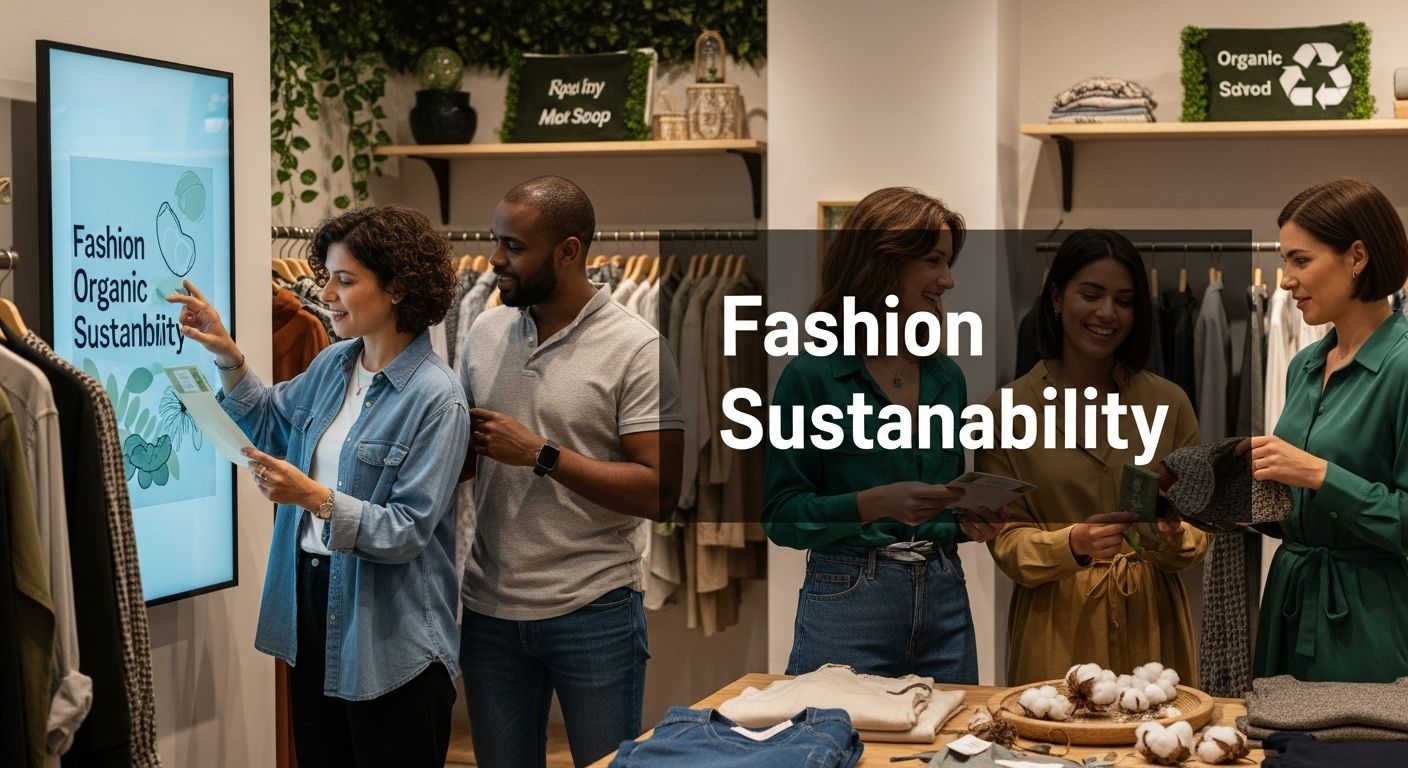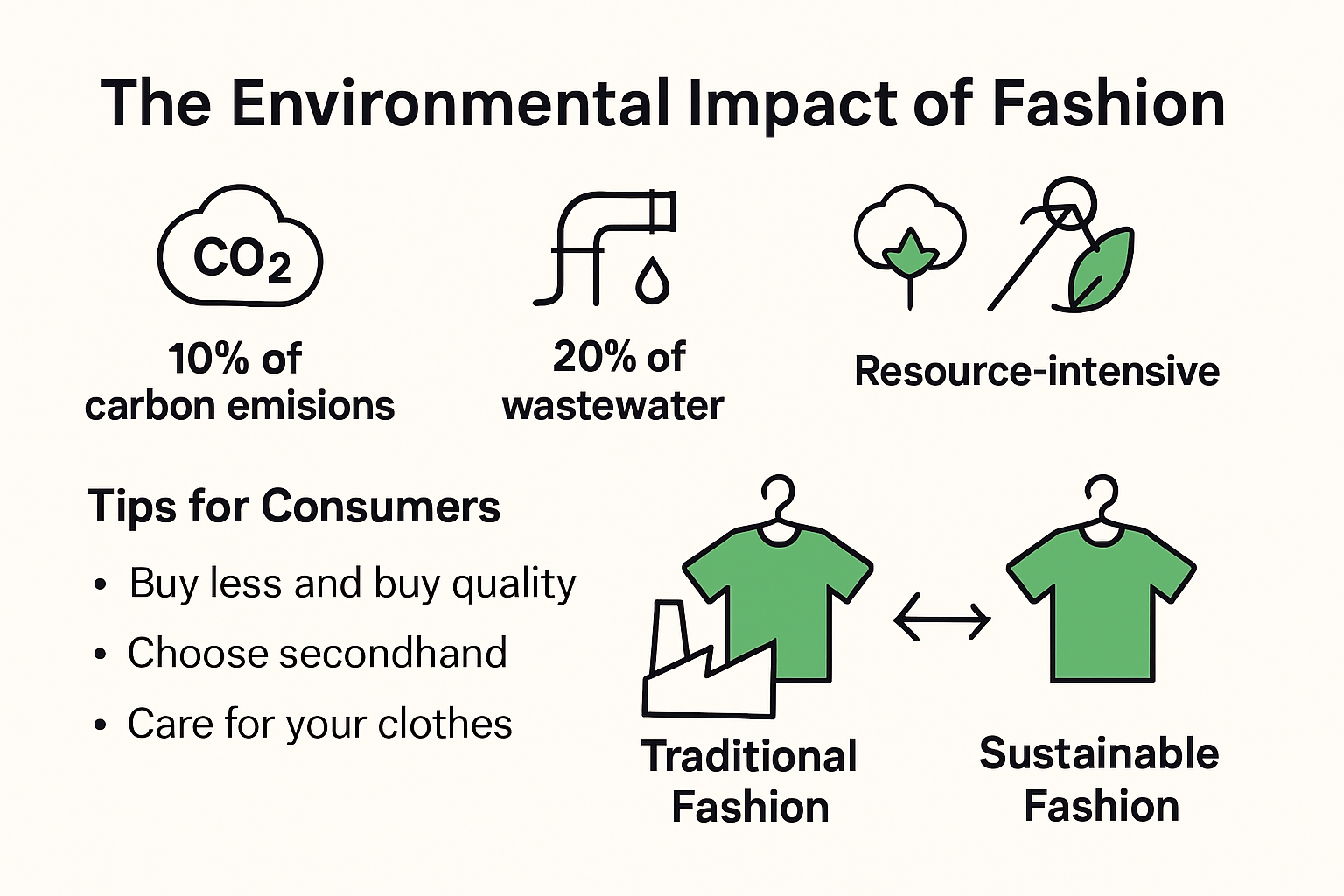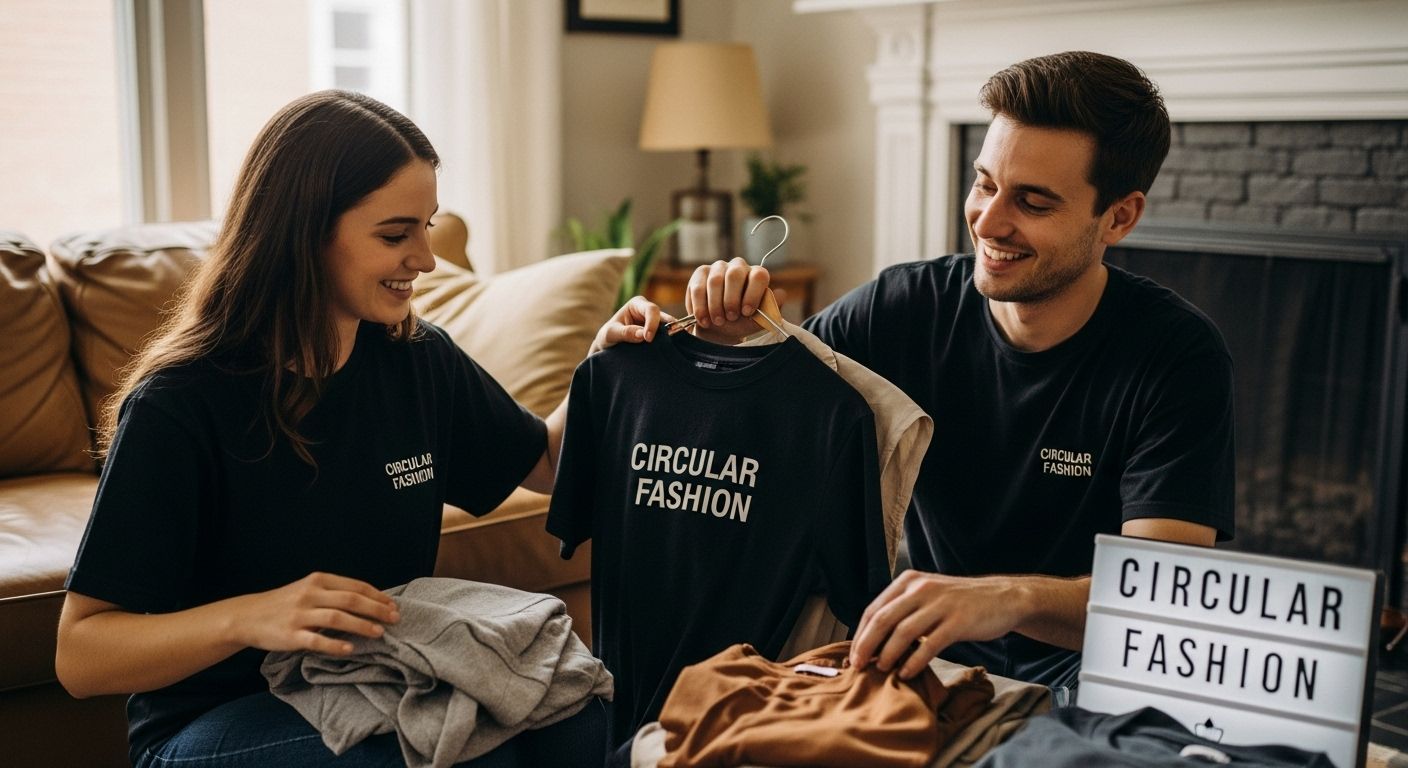Tax included and shipping calculated at checkout

Fashion is everywhere in our lives and most people are surprised to learn just how much it affects our planet. The global fashion industry is actually responsible for 10 percent of the world’s carbon emissions and 20 percent of wastewater. That sounds huge, right? What you might not expect is that every shopper already holds the power to make a positive impact through choices that go way beyond picking the latest trend.
Table of Contents
- Understanding Fashion Sustainability And Its Benefits
- How Sustainable Fashion Impacts Your Style Choices
- Easy Tips To Shop Sustainable Fashion Online
Quick Summary
| Takeaway | Explanation |
|---|---|
| Choose quality over quantity. | Invest in fewer, well-made clothing items that last longer, reducing waste. |
| Support ethical brands. | Look for brands with transparency in their production processes and fair labor practices. |
| Embrace circular fashion practices. | Engage in secondhand shopping, clothing repair, and swaps to extend garment life. |
| Be mindful of material choices. | Opt for eco-friendly materials like organic cotton and recycled fabrics when possible. |
| Participate in sustainable shopping strategies. | Use certifications and indicators to identify sustainable brands and make informed purchases. |

Understanding Fashion Sustainability and Its Benefits
Fashion sustainability represents a transformative approach to clothing production and consumption that goes far beyond simply choosing trendy outfits. At its core, this concept addresses the complex environmental and social challenges created by the traditional fashion industry.
The Environmental Impact of Fashion
The fashion industry has long been a significant contributor to global environmental challenges. According to the Yale Center for Business and the Environment, the industry accounts for approximately 10% of global carbon emissions and 20% of global wastewater. These staggering statistics highlight the urgent need for sustainable practices.
Traditional clothing production involves resource-intensive processes that strain our planet’s ecosystems. From water-heavy cotton cultivation to chemical-laden textile dyeing, each step of manufacturing creates substantial environmental stress. Sustainable fashion seeks to disrupt this harmful cycle by implementing innovative approaches that minimize ecological damage.
To help you quickly grasp the major environmental impacts of the traditional fashion industry, here is a summary of key industry statistics and contributing factors discussed above.
| Environmental Factor | Statistic/Detail |
|---|---|
| Global Carbon Emissions | 10% of worldwide carbon emissions |
| Wastewater Production | 20% of global wastewater |
| Resource-Intensive Processes | Water-heavy cotton cultivation, chemical dyeing |
| Harmful Manufacturing Cycle | Traditional methods strain ecosystems |
Ethical Dimensions of Sustainable Fashion
As Chatham House emphasizes, sustainable fashion transcends environmental concerns. It represents a holistic approach that considers the entire supply chain, ensuring fair treatment and economic opportunities for workers worldwide.
This approach means prioritizing:
- Fair Labor Practices: Ensuring safe working conditions and living wages for textile workers
- Transparent Production: Providing clear information about manufacturing processes
- Responsible Material Sourcing: Using eco-friendly materials that reduce environmental harm
Creating Personal Impact Through Conscious Choices
According to St. Catherine University, sustainable fashion involves avoiding harm to people and the planet while simultaneously enhancing overall well-being. Consumers play a crucial role in this transformation by making mindful purchasing decisions.
Individuals can contribute to fashion sustainability by:
- Buying fewer, higher-quality clothing items
- Choosing garments made from recycled or organic materials
- Supporting brands with transparent and ethical production practices
- Extending the life of existing clothing through proper care and repair
By understanding and embracing fashion sustainability, consumers become active participants in a global movement toward more responsible and conscious clothing consumption. Each purchase becomes an opportunity to support environmental preservation, ethical labor practices, and long-term planetary health.
How Sustainable Fashion Impacts Your Style Choices
Sustainable fashion is not just an environmental statement but a powerful way to redefine personal style and express individual values. As consumer awareness grows, style choices are increasingly becoming a reflection of personal commitment to ethical and eco-friendly practices.
Developing a Conscious Personal Style
According to experts from the University of Michigan, developing a personal style is key to reducing fashion waste. By curating a wardrobe that reflects individual personality and focuses on quality over quantity, consumers can dramatically reduce their environmental footprint.
This approach involves several strategic choices:
- Quality Over Quantity: Investing in well-made pieces that last longer
- Versatile Pieces: Selecting clothing that can be mixed and matched across multiple outfits
- Timeless Design: Choosing classic styles that transcend seasonal trends
Generational Shift in Fashion Consumption
Research from Cornell University reveals a significant trend among younger consumers. An impressive 68% of Gen Z shoppers have made eco-friendly purchases in the past year, signaling a profound transformation in fashion consumption patterns.
This generational shift demonstrates that sustainable style is no longer a niche concept but a mainstream movement. Young consumers are actively seeking brands that align with their environmental and social values, proving that fashion can be both stylish and responsible.
Personal Values and Circular Fashion
A comprehensive study in sustainability research highlights that environmental awareness significantly influences consumer behavior towards circular fashion. Personal values are becoming a critical driver in style choices, with individuals increasingly viewing their wardrobe as an extension of their ethical commitments.
Circular fashion encourages consumers to think beyond traditional purchasing habits by:
Here is a table comparing practical ways individuals can participate in circular fashion, along with brief descriptions of each approach as discussed above.
| Circular Fashion Practice | Description |
|---|---|
| Secondhand Shopping | Buying vintage or thrifted clothing to reuse existing garments |
| Clothing Repair | Fixing or mending garments to extend their lifespan |
| Rental/Swap Services | Using platforms to rent or exchange clothes with others |
- Embracing Secondhand Shopping: Exploring vintage and thrift stores
- Clothing Repair: Learning basic mending skills to extend garment life
- Rental and Swap Services: Participating in clothing exchange platforms
By reimagining style through a sustainable lens, consumers can create wardrobes that are not only visually appealing but also environmentally conscious. This approach transforms fashion from a disposable commodity to a meaningful form of personal expression that respects both individual creativity and planetary well-being.

Easy Tips to Shop Sustainable Fashion Online
Online shopping has transformed how we purchase clothing, and with the right strategies, consumers can make sustainable fashion choices directly from their digital devices. Navigating the world of eco-friendly online fashion requires a thoughtful and informed approach.
Identifying Sustainable Brands and Certifications
According to Green America, verifying the sustainability credentials of online vendors is crucial when shopping for environmentally conscious fashion. Shoppers should look for specific certifications and indicators that demonstrate a brand’s commitment to ethical and sustainable practices.
Key indicators of a sustainable online fashion brand include:
- Organic Certification Logos: Look for recognized organic textile certifications
- Transparent Supply Chain Information: Brands that provide detailed information about their production processes
- Third-Party Sustainability Verifications: Independent audits and environmental assessments
Smart Shopping Strategies for Eco-Conscious Consumers
Earth Day recommends several practical approaches to sustainable online fashion shopping. The key is to prioritize quality, versatility, and environmental responsibility when making digital purchasing decisions.
Effective strategies include:
- Secondhand Shopping: Exploring online vintage and resale platforms
- Natural Material Selection: Choosing garments made from organic cotton, hemp, or recycled fabrics
- Supporting Small Ethical Brands: Identifying and purchasing from independent designers committed to sustainability
Extending Clothing Lifecycle Through Mindful Choices
The Soil Association highlights the importance of extending clothing lifecycle as a critical component of sustainable fashion. Online shoppers can make significant environmental impacts through careful selection and maintenance of their clothing.
Practical tips for extending clothing lifecycle include:
- Proper Care Instructions: Following washing and storage guidelines to maintain garment quality
- Repair and Alteration: Investing in clothing repair services or learning basic mending skills
- Clothing Swaps: Participating in online clothing exchange platforms
By adopting these strategies, online shoppers can transform their digital fashion experiences into powerful acts of environmental stewardship. Each conscious choice represents a step towards a more sustainable and responsible approach to clothing consumption, proving that style and sustainability can coexist beautifully in the digital marketplace.
Frequently Asked Questions
What is fashion sustainability?
Fashion sustainability refers to a holistic approach to clothing production and consumption that prioritizes environmental preservation, ethical labor practices, and the overall well-being of individuals and communities involved in the fashion industry.
How does the fashion industry impact the environment?
The fashion industry is responsible for approximately 10% of global carbon emissions and 20% of wastewater. Resource-intensive processes in clothing production, like cotton cultivation and dyeing, contribute significantly to environmental degradation.
What are some practices to support sustainable fashion?
Consumers can support sustainable fashion by choosing high-quality garments, opting for eco-friendly materials, buying secondhand, participating in clothing swaps, and supporting brands that prioritize ethical labor practices and transparent supply chains.
How can I extend the lifecycle of my clothing?
To extend the lifecycle of clothing, practice proper care by following washing and storage guidelines, invest in repairs or mending, and engage in clothing swaps to keep garments in circulation, reducing waste.
Bring Your Sustainable Fashion Choices to Life With Vasita.shop
Discovering the impact that fashion has on the environment can leave you feeling overwhelmed by the need to make better choices. As the article shows, many shoppers want to support ethical brands, embrace circular fashion, and select eco-friendly materials but often struggle to find a convenient place that offers all these options in one spot.

Take the next step toward a sustainable wardrobe by exploring Vasita.shop. Our curated clothing collections make it easy to invest in quality pieces that last and reflect your values. Whether you are looking for versatile essentials or seasonal updates, browse our selection and experience online shopping designed for mindful shoppers like you. Visit Vasita.shop now and start building a wardrobe that is as responsible as it is stylish. Your conscious choices matter—make them count today.



